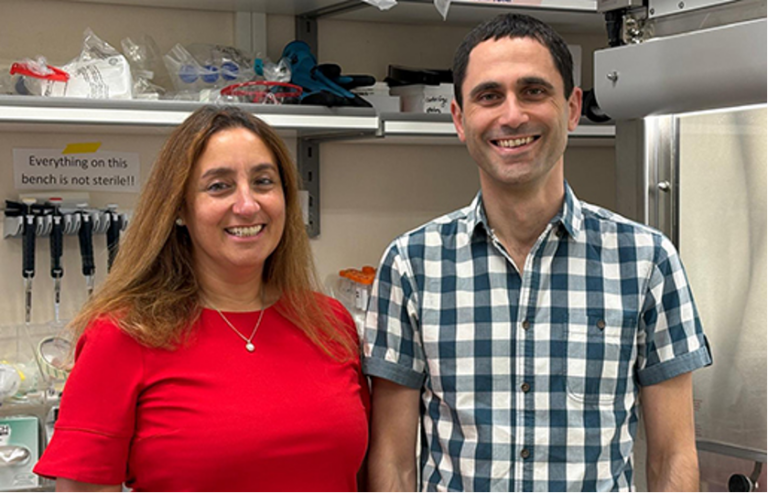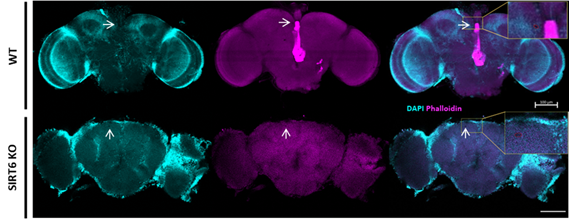L’Université Ben Gourion du Néguev montre que l’AAT détruit les bactéries chez les patients immunodéprimés

[:fr]Les chercheurs de l’université Ben Gourion du Néguev ont découvert qu’un traitement à base d’alpha1-antitrypsine (AAT) est à même de tuer les bactéries chez les patients immunodéprimés. Cette étude examine un aspect fascinant des nouvelles thérapies anti-inflammatoires. « Imaginez qu’on fasse inhaler de l’alpha1 à des patients affaiblis sur le point d’être hospitalisés pour de longues périodes dans des établissements hospitaliers riches en bactéries » explique le Dr Lewis, de l’université Ben Gourion du Néguev. «Nous savons déjà que le bénéfice de l’alpha1 concerne un grand nombre de souches bactériennes, et aucune preuve de résistance bactérienne d’aucune sorte n’a été apportée ».
Publication dans le Journal of Infectious Diseases, déc. 2014[:en]Alpha1-antitrypsin (AAT) does a surprisingly good job killing bacteria, a research team at BGU, which has been studying the drug, has discovered. The recent study reported in the Journal of Infectious Diseases by the group headed by Dr. Eli C. Lewis “Acute Phase Protein α1-Antitrypsin Reduces Bacterial Burden in Mice by Selective Modulation of Innate Cell Responses” examines an intriguing aspect of the newly appreciated anti-inflammatory therapeutic. While widespread use of alpha1 treatment is anticipated, the question remained: What would be the consequence of treating individuals with immune conditions using alpha1 in so far as susceptibility to infections?
Assuming that the reduction in inflammatory profile might seem like a weakness in the eyes of an invader, the group sought to directly tackle this important point, head-on. Lead by Kaner Ziv and Shahaf Galit of the Lewis Lab at BGU, mice were directly infected with various strains of live bacteria at different infection sites, including lungs and gut. The initial aim was to exclude the possibility of worsening infection progression in treated mice. Yet the group stumbled upon highly unexpected outcomes: not only did the treated mice combat the infections better, but the bacteria that were directly introduced into the various compartments were practically eradicated by alpha1 therapy before the end of the first 24 hours; there were barely bacteria left to grow colonies on a plate.
The clinical implications are immense.
« Imagine we provide inhaled alpha1 to weak patients that are about to be hospitalized for prolonged periods of time in bacteria-rich hospital facilities, » says Dr. Lewis, head of the clinical islet laboratory at BGU. « We already know that the benefit of alpha1 under these conditions spans a vast number of bacterial strains with no evidence for bacterial resistance of any kind ».
Take into account the current frustration with antibiotic development rate compared to bacterial resistance rates, and one may better appreciate the availability of a safe preemptive readily accessible approach.
The molecule is produced by human bodies particularly during inflammatory bouts and has been known to reduce excessive inflammation. Recent clinical trials have rapidly expanded to test its use for juvenile diabetes and for bone-marrow transplants, where the immune system exerts unwanted and highly injurious actions. Rapid, because the safety of this molecule has been confirmed by thirty years of life-long use in the case of a rare genetic deficiency.
The mechanism behind this outcome is the main goal of the team these days. Hints as to the mechanism are included in the journal article, according to which alpha1 is in fact inflammatory in the first hours post-infection. White blood cells readily invade the infected area and kill bacteria in its presence, even, at times, more effectively than without alpha1. How can this be? Many avenues are under consideration. For one, it is known that the immediate hours after infection are laden with oxygen radicals that are sprayed locally by aggravated white blood cells. These radicals dock onto alpha1 and disable it. In addition, some attributes of alpha1 include protection from cell death, including immune cells; thus, its presence prolongs the life of immediate white blood cell invading populations under harsh conditions that might otherwise have limited their survival.
Lastly, alpha1 prevents the spread of cell injury. For bacteria, the instigation of inflammation is actually a plus with regards to the weakening of local barriers, be it epithelial skin lining, lung walls or even blood vessels. We humans harnessed this inflammatory trigger early along our co-evolution with bacteria so as to alert us to an invasion and thus instigate recruitment of white blood cells. Yet bacteria use inflammation to cross damaged barriers. With rising levels of alpha1 in the picture, normal cells remain intact while the bacteria are killed, thus limiting their subsequent plan for barrier penetration.
Report in the Journal of Infectious Diseases, december 2014.
[:]







